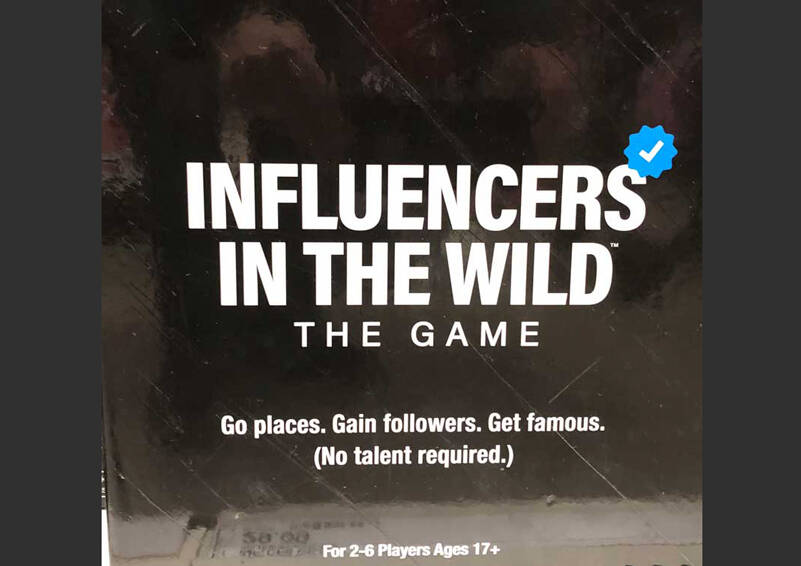By Morf Morford, Tacoma Daily Index
Every decade is defined by its trends, fashions, music and obsessions. These are expressed in music, architecture, art and a variety of other forms. From technology to music to furniture, our values, fears and fantasies take on physical representations.
We are far enough into the 2020s to get a sense of some of these trends. Some are even fading already. Cryptocurrencies, for example, like Fidget Spinners, seem to have already hit their peak and are unlikely to reclaim their allure.
It ain’t rock and roll
Whatever you may want to call popular music of the 2020s, it is certainly NOT rock and roll.
Bands have retreated and individual artists tend to dominate the market.
The ’60s were defined by “The British Invasion”, the ’70s by Disco, the ’80s by arena-rock, Rap and Hip-hop and the ’90s by Grunge, the 2020s (so far) could be defined by female vocalists who sing about relationships or their complications.
Rarely do artists sing about anything beyond their personal drama. When it comes to music in the 2020s, apparently, self-pity sells.
Don’t expect insightful or provocative commentary from our current crop of pop artists. When it comes to homelessness, urban crime, political corruption, injustice in any form, corporate malfeasance, climactic upheavals, immigration, political polarization, war, famine and a few other themes that dominate our headlines and intrude in our personal lives, don’t expect any of our current pop troubadours to speak up about them.
Physical media is also largely gone, even though we are still in perhaps the twilight of the much-heralded “vinyl revival”. One commentator made the observation that we who used to “buy” music on any given format, now only rent it.
And that might be the ultimate metaphor for our era – we are all, to some degree, renters. Not just of big things like houses, but even of smaller things like books and music.
Streaming of music is the dominant format. The sound quality is tinny and weak at best. And no one makes money.
From recording artists to the streaming services, perhaps even for us who listen, making music has become a losing proposition.
Cars
Cars in the 1950s had big fins. Cars in the 1960s had big engines. Cars in the 2020s are just big.
Whether they are electric or traditional fossil fueled combustion engines, vehicles in the 2020s are multiple sizes larger than a decade or so ago.
We Americans love our cars – at least as much as we love anything; until they cost too much or another model catches our attention.
Fuel cost or efficiency are defining features – sometimes. But the dazzling appeal of ever-larger vehicles seems irresistible to many of us.
Larger vehicles and additional lanes have only made traffic (and parking) far more difficult, expensive and complicated (and, for pedestrians – especially children and animals – far more dangerous).
We know that more pedestrians, bike lanes, lower speed limits and walkable neighborhoods are safer, better for business and more conducive to shared community and a deterrent to crime – and increase in property values. But if we have to sacrifice, or even curtail our use of cars – or their size, we just won’t do it.
We know that more pedestrians, bike lanes, lower speed limits and walkable neighborhoods are safer, better for business and more conducive to shared community and a deterrent to crime – and increase in property values. But if we have to sacrifice, or even curtail our use of cars – or their size, we just won’t do it.
Interest rates and inflation
The US economy has grown at a consistent, but timid rate of about 2, almost 3 percent annually. That’s not terrible, but it isn’t good.
As of this writing, the Fed raised interest rates eight times in the past year or so.
Inflation is at about a 40 year high and shortages of everyday items, from eggs to cat food have become almost routine.
Fantasy currencies and millionaire Tik-Tok “influencers” and “content creators” have only added to the effervescent, and ultimately empty core of our economy.
Every shopping trip to the grocery store has been an exercise in “buy it now because it will cost more next week”. If you can find it this week. Empty stores shelves, unthinkable just a few years ago, have become routine.
AI
Artificial intelligence, primarily through programs like the ChatGPT text generator, has up-ended our sense of what is art, writing or research, or even ours. What after all, is plagiarism if ChatGPT scans (and basically steals) every thing and “writes” it as something new?
Housing
There is little that is more basic than shelter. Everything from food preparation to parenting to personal hygiene is premised on stable shelter.
By whatever set of circumstances, suitable shelter became inaccessible to record numbers of local citizens.
Add in fugitives and refugees from political or religious persecution and natural catastrophes – with limited resources and skills – and you have a volatile mix on virtually every urban landscape.
Mix in high powered weapons and drugs than can kill with a single, barely measurable dose and you have death and violence on our streets at a level and degree few of us would have imagined in our most dystopian nightmares.
The single family home in the suburbs has become just another casualty in a predatory economy.
The high tech honeymoon is over
Social media, after several years, is finally being recognized as the intrusive, imagination-impoverishing, time-wasting medium it has always been.
And as a career track, those lucrative high tech jobs have become as much of an illusion as the products many of them promote. Layoffs by the thousands impact everything from local and global job markets to production to housing prices and commuting patterns.
I knew many who saw the high tech field as one that would revolutionize (for the better) the lives of us all. High tech firm used words like “evangelist” to describe their mission.
After layoffs and scandals, more and more are discovering that a high tech job is just a job.
Pandemics
We’ve always had flu seasons and minor infections. But most of us could afford to ignore them.
Not in the 2020s. For whatever set of reasons and historical circumstances, pandemics were everywhere – and seemed to stop everything.
From travel to vacations to work and public school, no aspect of our lives seemed safe from the dreaded viruses of the 2020s.
And the one thing we all know for sure is that what we have seen so far is just the beginning.
For the first time in America, average longevity has been declining. Leading causes of death in the USA are largely preventable, and, in many cases, rare to non-existent in many other nations. From cancer to heart disease to diabetes to accidents or suicide (the second leading cause of death among children and adolescents aged 10–14), we, by intent or accident or life style, are killing ourselves. Who needs a pandemic when junk food and video bingeing will do as much damage?
Intense/extreme and wild weather
Whatever terms we use to describe our weather, the undeniable reality is that weather, short term and long term, is impacting us as never before. From disrupted crop production to ever-more hazardous transoceanic shipping to drought, floods and disappearing glaciers, rain, heat and cold have taken a turn most of us did not expect. What used to be benign has become, for too many of us, a series of threats.
Political polarities
Political polarities have given way to unbridled cynicism. Instead of opposing, even demonizing, those we might have political or philosophical differences with, all too many of us have declared our belief that the entire “system” is corrupt and “rigged”.
From taxes to elections to financial institutions and public schools, it has become a 21st Century trend to disbelieve and distrust everyone and everything.
Government and church, once the anchors of any stable society, have been discredited, if not assaulted – primarily by those who call themselves patriots and believers.
Faith and trust, and even friendship have all been replaced by entrenched, non-negotiable beliefs with little if any middle ground – on any issue. Every topic has become a trigger and family gatherings have become uncomfortable for almost everyone.
The Attention economy
The highway to wealth and fame in the 2020s could not be simpler; just be louder, glitzier and more dazzling than the zillion other flashing and flickering lights on the internet. “Likes” means money, “influencing” might not mean anything two years from now, but today it means money and stardom.
And what could be more 2020s than flash and cash?
Just find a new way to package and sell the idea that you have an angle to find more money, more success, more love, more happiness, and get others to believe you, and the money and accolades keep pouring in.
As with any product (real or imaginary) it’s all in the marketing. And in the 2020s we DO marketing.
Where do we go from here?
The 2020s are far from over, but who we are and what we are becoming is already, in many ways, becoming tangible, even solidified by what we care about – or what raises our temperatures. Like pieces in an orchestra, each one of us contributes our little but significant part to the tone and texture of the larger composition.
Electric cars, AI and meatless “meats” won’t save us
Like every civilization perhaps, we expect our clever inventions to save us.
And like virtually every civilization that came before us, we put our faith in the wrong things.
We might make fun of the dorky fashion sense of previous eras, but we are just as subject to the beliefs and trends of our times.
The question for us, and presumably every era is, what matters? What do we really believe? And are we the people we say we are?
In traditional cultures, a common saying is, “We are our ancestors”. That is a statement of belief – and belonging. Not only are we the literal progeny of our ancestors, we are also, we hope, a future generation’s ancestors. Will they be thankful for the world we have handed off to them? Or will they make fun of the things that seemed so important to us?





